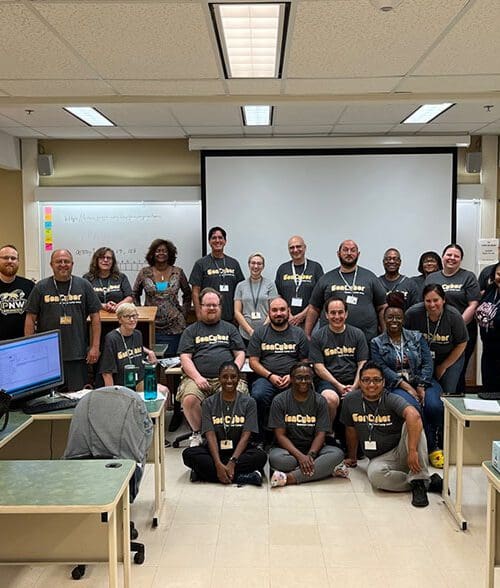PNW College of Technology and GenCyber Camp bring cybersecurity awareness to local teachers

The Department of Computer Information Technology and Graphics at Purdue University Northwest (PNW) received grants from the National Security Agency (NSA) to host a GenCyber camp for teachers in July. The teacher camp focused on education about cybersecurity concepts covering a variety of topics and using several software and hardware technologies to help them learn and make the experience fun.
The program included an in-depth look at Python programming and coding vulnerabilities and ciphers through the software; hacking tools and forensics; using a Raspberry Pi for programming and as an Internet of Things device; using a Sparki robot to teach C coding and robot control and games; and cyber-safety approaches to various vulnerabilities. At the end of the week, teachers presented lesson plans formulated to showcase their learnings.
Speaking on the importance of introducing cybersecurity and cyber-safety at the primary and secondary levels, as well as at the instructional level, Associate Professor of Computer Information Technology George Stefanek cited the current technological climate as one of the factors influencing the camp’s production.
“As our world becomes further interconnected through computer, network, internet, and cloud services infrastructure, the personal and business tasks that we perform will increasingly require the use of this infrastructure, ” Stefanek said. “Disruptions to this infrastructure can have major impacts to our business and personal daily activities.”
PNW has created online tools and resources for teaching cybersecurity to help middle and high school teachers integrate cybersecurity topics into their schools’ curricula. The development of these resources is led by Michael Tu, professor of Computer Information Technology and director of the Center for Cybersecurity.
PNW now offers a bachelor of science in Cybersecurity, which educates students in technical competency, knowledge and skills needed to protect networks, systems, software programs and data from criminal or unauthorized access.